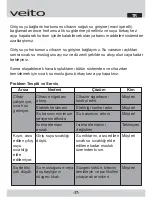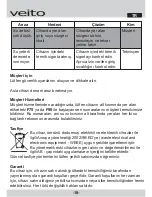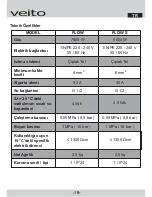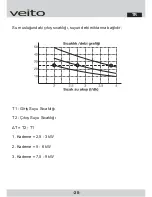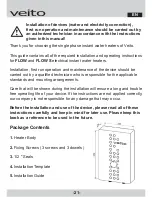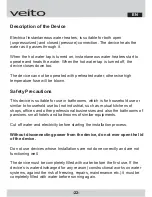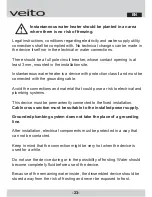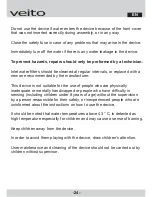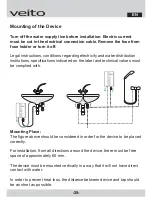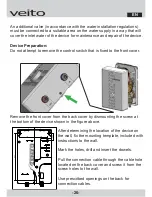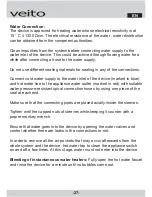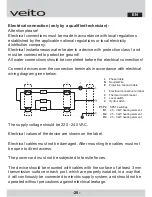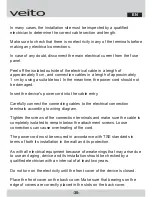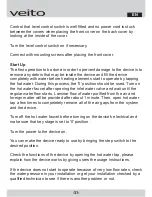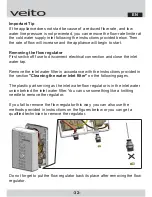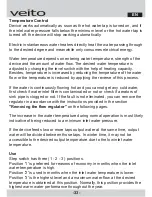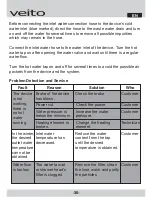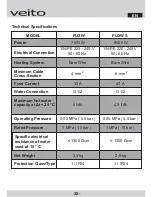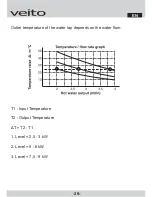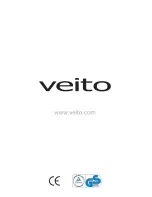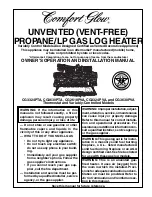
Water Connection :
The device is approved for heating water whose electrical resistivity is at
15 ° C ≤ 1300 Ωcm. The electrical resistance of the water , water distribution
can be obtained from the competent authorities.
Clean impurities from the system before connecting water supply to the
water inlet of the device. This could be achived through flowing water for a
while after connecting a hose to the water supply.
Do not use different sealing materials for sealing in any of the connections.
Connect cold water supply to the water inlet of the device (marked in blue)
and hot water line to the appliance water outlet (marked in red) with suitable
water pressure-resistant spiral connection hoses by using one piece of the
seal at each end.
Make sure that the connecting pipes are placed axially inside the sleeves.
Tighten well the capped nuts of sleeves while keeping it counter with a
proper monkey wrench.
Ensure that water goes into the device by opening the water valves and
control whether there are leaks in the connections or not.
In order to remove all the air pockets that may occur afterwards from the
whole system and the device, hot water tap to clean the appliance switch
on and off a few times. At this stage, water must not enter into the device.
Bleeding of instantaneous water heaters:
Fully open the hot water faucet
and rinse the device for a minute until no bubbles come out.
EN
-27-
Summary of Contents for FLOW
Page 40: ......





